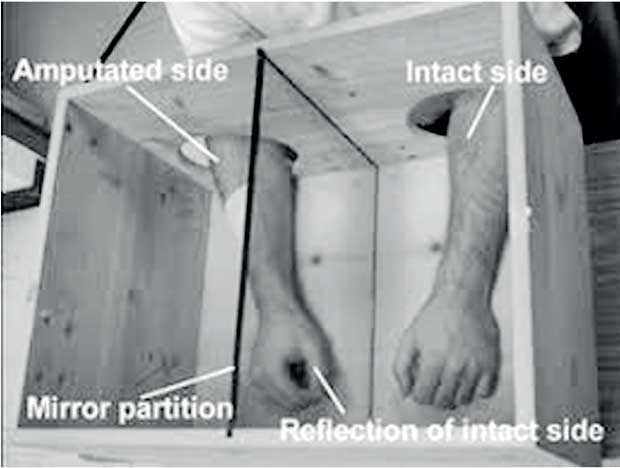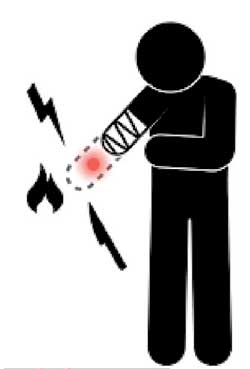Reply To:
Name - Reply Comment
 Today, in our mission to take our reader through the obscure pathways in medicine, which lead to quite fascinating destinations, but remain mostly unexplored by the layman, we are exploring the subject of ‘Phantom Limb’.
Today, in our mission to take our reader through the obscure pathways in medicine, which lead to quite fascinating destinations, but remain mostly unexplored by the layman, we are exploring the subject of ‘Phantom Limb’.
Amputation of a limb or a part of a limb is done due to various causes in medicine. Irreparable trauma and severe infection resulting in death of the limb or part of a limb are some such reasons for performing amputations. Even though it’s usually devastating for the patient, surgery is done in order to prevent infection or toxic substances from the affected part from spreading further and to retain maximum possible function in the limb through reconstruction.
Even though the limb is not there, the nerves that are leading from the limb to the brain and the part of brain representing that limb
Even after the limb is removed during the surgery, it is found that many patients retain the ‘feelings’ of that limb, called ‘phantom limb sensations’. Try to imagine that you are missing a part of your leg and that you feel an uncontrollable itchy sensation in the big toe of that ‘missing’ limb, which in reality is just thin air. Some cases go as far as experiencing severe long term pain in the missing limb to an extent that it greatly hinders their day-to-day lives.

Initially, this curious phenomenon was believed to be of psychological origin, meaning that the patient ‘imagined’ that the limb was still there and it was paining. But with the advancement of medicine; even though we are far from understanding completely the phenomenon of phantom limb, it has been discovered that it was the ‘brain’ and not the mind that has been fooled.
 Even though the limb is not there, the nerves that are leading from the limb to the brain and the part of brain representing that limb are still very much intact. There are various theories as to why the sensations are felt even when the limb is removed.
Even though the limb is not there, the nerves that are leading from the limb to the brain and the part of brain representing that limb are still very much intact. There are various theories as to why the sensations are felt even when the limb is removed.
One suspected cause is increased sensitivity of the residual nerves to stimuli, causing pain while another, more interesting theory suggests that the areas of the brain representing the amputated part are ‘rewired’ due to lack of work to do, resulting in stimuli in other body parts, the lips for an the example, generating sensation in absent limb. This has been proved to be true by conducting nerve conduction studies. Another theory is the ‘remembered pain hypotheses’, where it is believed that the pain in the limb that the patient experienced around the time of amputation makes a strong impression in the brain, which later manifests as phantom pain. This is also believed to have some basis due to the fact that the phantom pain phenomenon is more common in patients who had severe pain of the limb before amputations.
Some cases go as far as experiencing severe long term pain in the missing limb to an extent that it greatly hinders their day-to-day lives
Even more interestingly, some methods of treatment for phantom limb pain methods involve purposely tricking the brain too. In the treatment method called ‘mirror box’, invented by Dr. V.C Ramachandran, a mirror is placed in front of the missing limb and the intact limb is placed in front of it so the brain is tricked into thinking that both limbs are intact. Relaxing the intact limb in front of the mirror has resulted in the tightening painful sensations in the phantom limbs to go away in many patients.
Learning about the challenges brought forward by Mother Nature, and observing innovative designs by humans in order to overcome those barriers can be quite intriguing, don’t you agree?